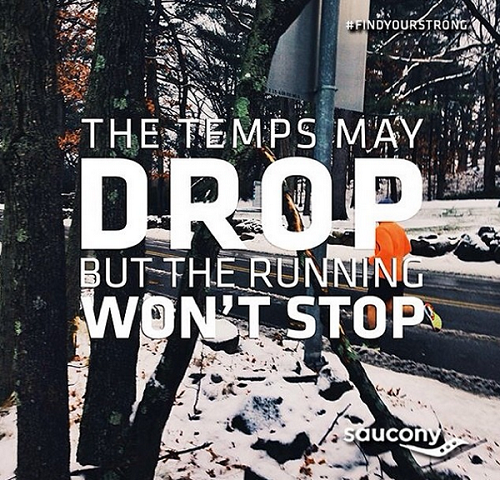Running In The Winter
- Posted on

Does the thought of running in the winter intimidate you?
Many of us have phobias of slipping or getting frostbite. We know running in the winter can be quite the challenge, but can be quite exhilirating if you’re well prepared. A lot of times winter running is about surviving the elements and trying to maintain your fitness level. It can be a tough task to do. The first step is getting out the door!
Here are a few tips for running in the winter:
* Lessen your expectations for the speed in which you want to run. If you slow down your pace you lessen the chance of falling, and it gives you the opportunity to focus properly on your form.
* Run with your arms out at your side, elbows slightly out for balance. Run with small arm movement like a pendulum swinging just in front of you and just swing behind you.
* The goal is to have as much of your foot make initial contact with the ground as possible, giving you the best opportunity for traction on snow and ice.
* Have the proper gear! Plan what you are going to wear in advance. It cannot be emphasized enough how important it is to invest in good winter running gear. It will make winter much more enjoyable. Purchasing quality running gear enhances comfort and safety. Make it a priority to consider a good windbreaker, waterproof shoes, merino wool socks, a reflective vest and LED lights.
* Plan your run route. Try to stick to roads, sidewalks, and pathways that you know are cleared on a regular basis. Consider running roads that have bus routes or in areas where there are schools as the roads are typically cleared quickly and more often.
The Do’s and Don’ts Of Winter Running Are:
DON'TS
* Avoid running on painted lines on all surfaces such as roads, crosswalks or shoulders. Intersections and lane markings are extremely slippery in cold wet surface conditions so stay away from them!
* Avoid making contact with metal connection plates on bridges. These are extremely slippery in wet cold conditions and usually result in a wipeout.
* Don’t wear too much or too heavy of clothing. Plan your gear in advance, and avoid wearing cotton at all costs. Once cotton gets wet from moisture it will feel cold on your skin and give you a chill. Take a walk outside to test the gear you’re wearing. It should leave you feeling a little uncomfortable as you’re standing outside doing your warm-up…you should not be comfortable. Overheating during the run makes the whole duration feel uncomfortable.
* Do not run in weather colder than -40°C, skin freezes and frostbite will be your new friend. This might be the day to introduce yourself to treadmill running!
DO’s
* Start your run with a balaclava or a buff keeping your ears and parts of your face protected from the elements. These items can always be adjusted as you start to produce heat.
* Wear gloves. They can always be taken off and put in your pockets. If your hands are always cold try a mid-weight glove and put a wind mitt over top for extra protection.
* Wear Yaktrax during the worst of road conditions. They provide great traction on snow and ice.
* Wear snow tires for your shoes! Wearing waterproof shoes with a substantial tread will tremendously help with the footing as well as keep your feet warm and dry.
If you run with these tips in mind it will make running in the winter that much more enjoyable. Always be aware of your surroundings and surfaces, focus on your form and most of all slow down and have some fun!
Happy winter running!
